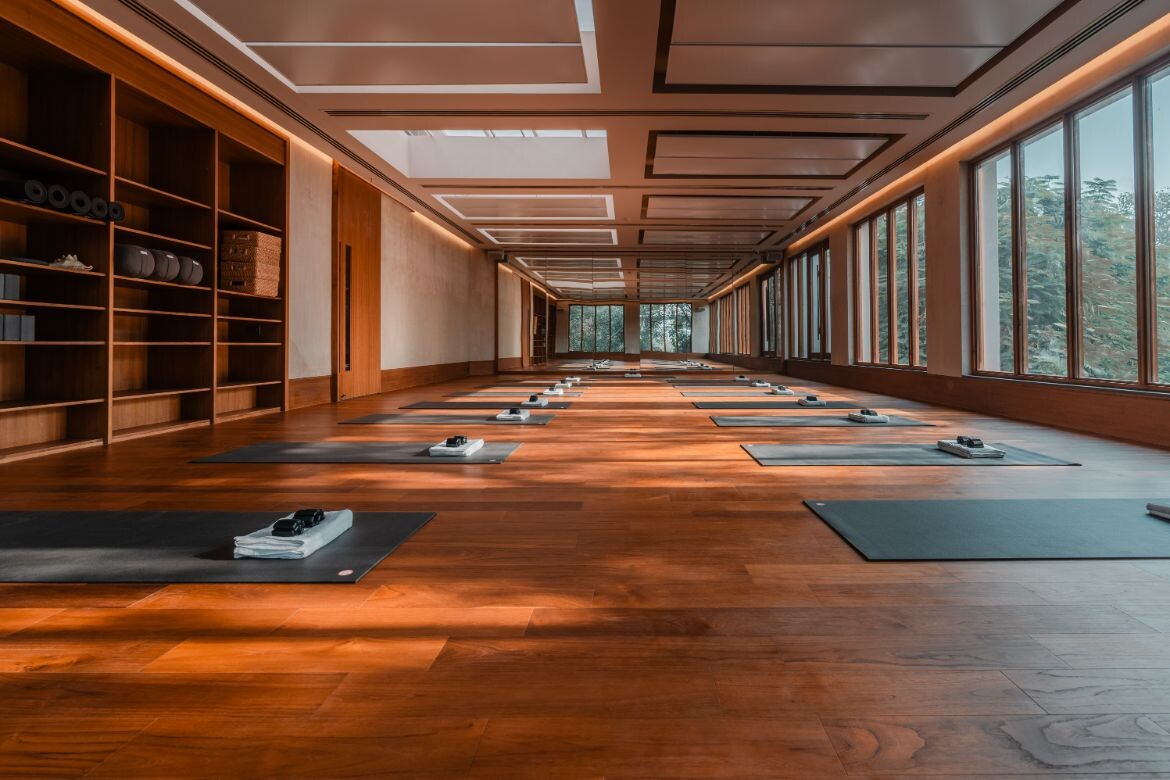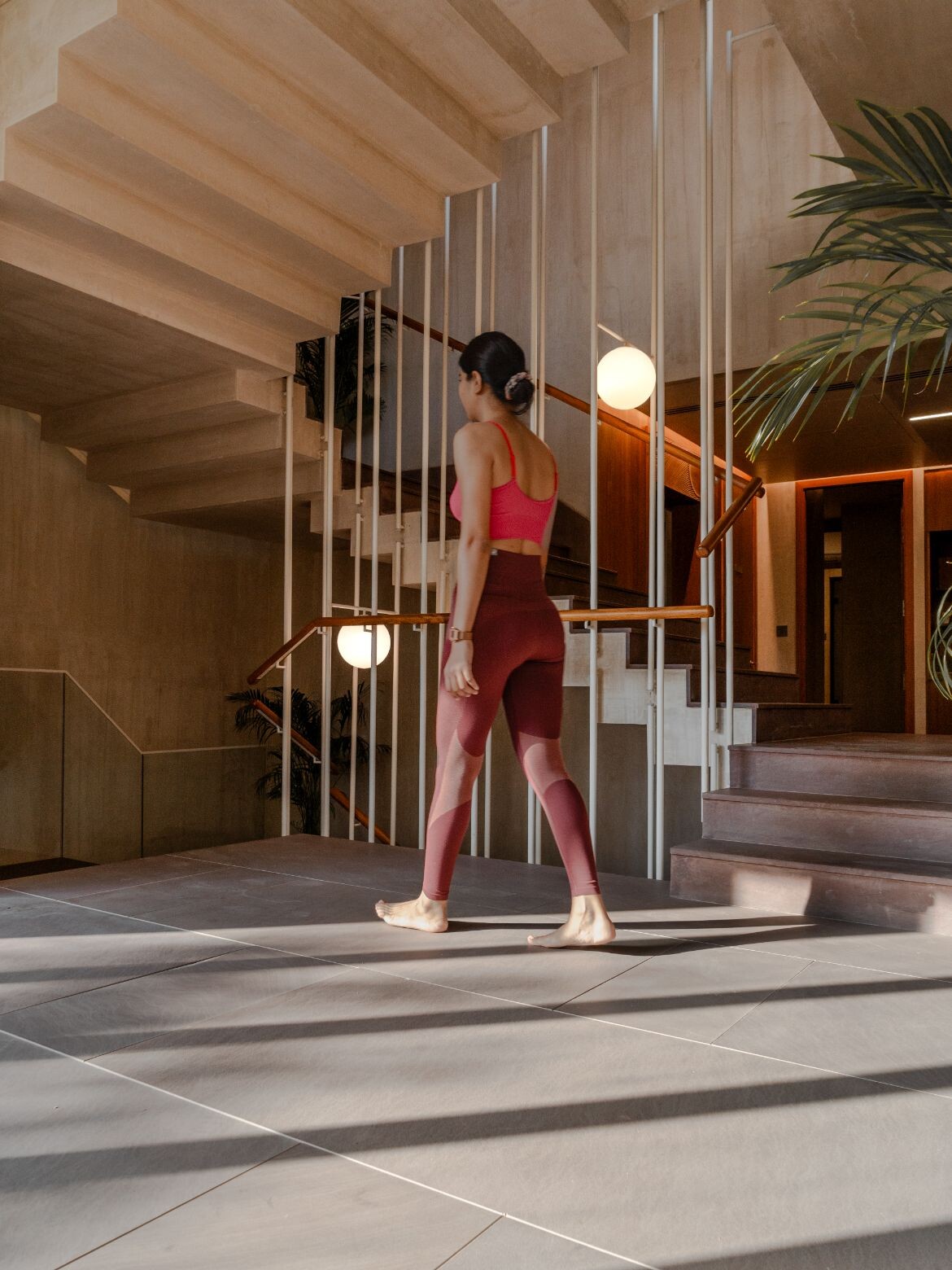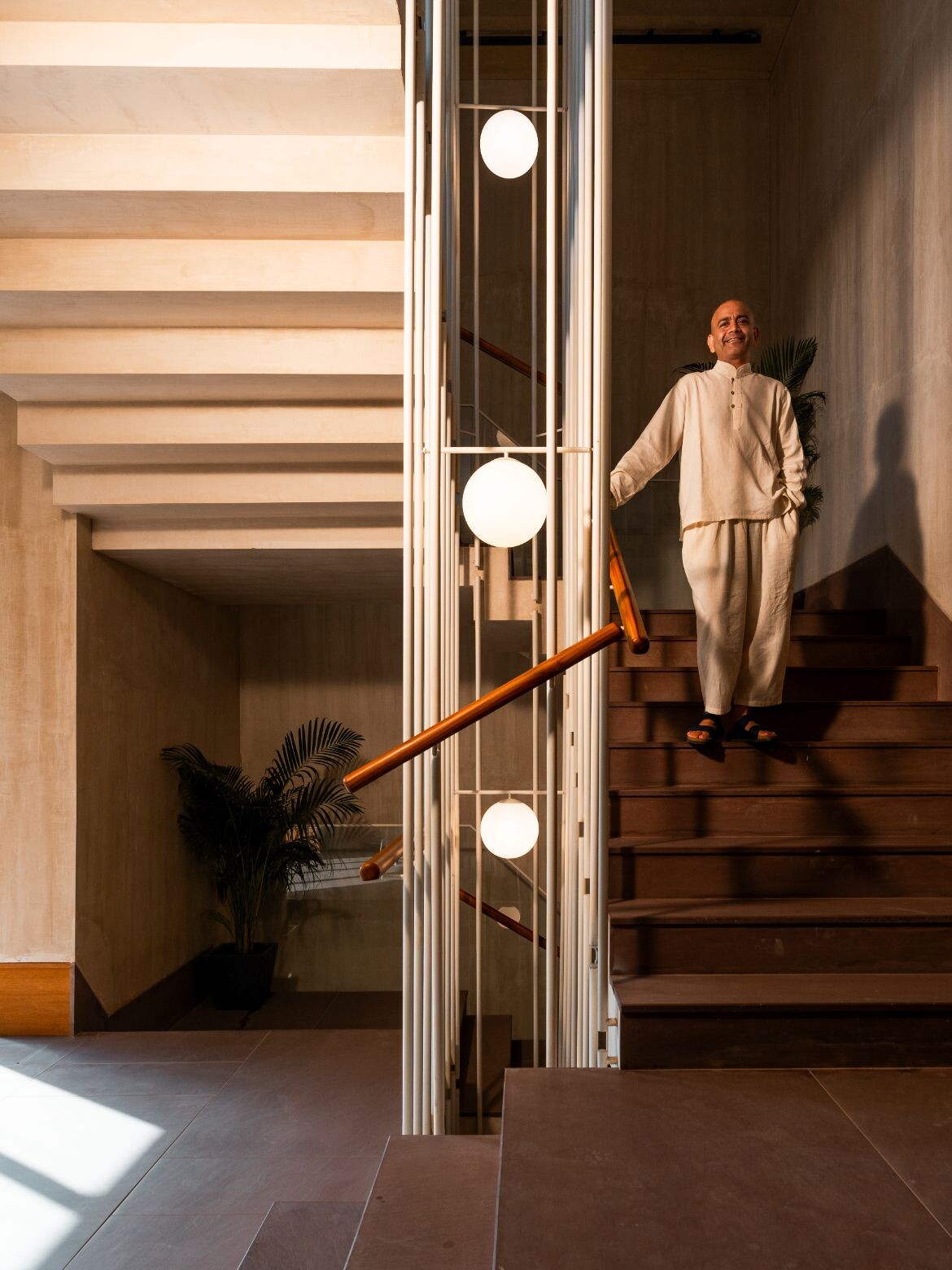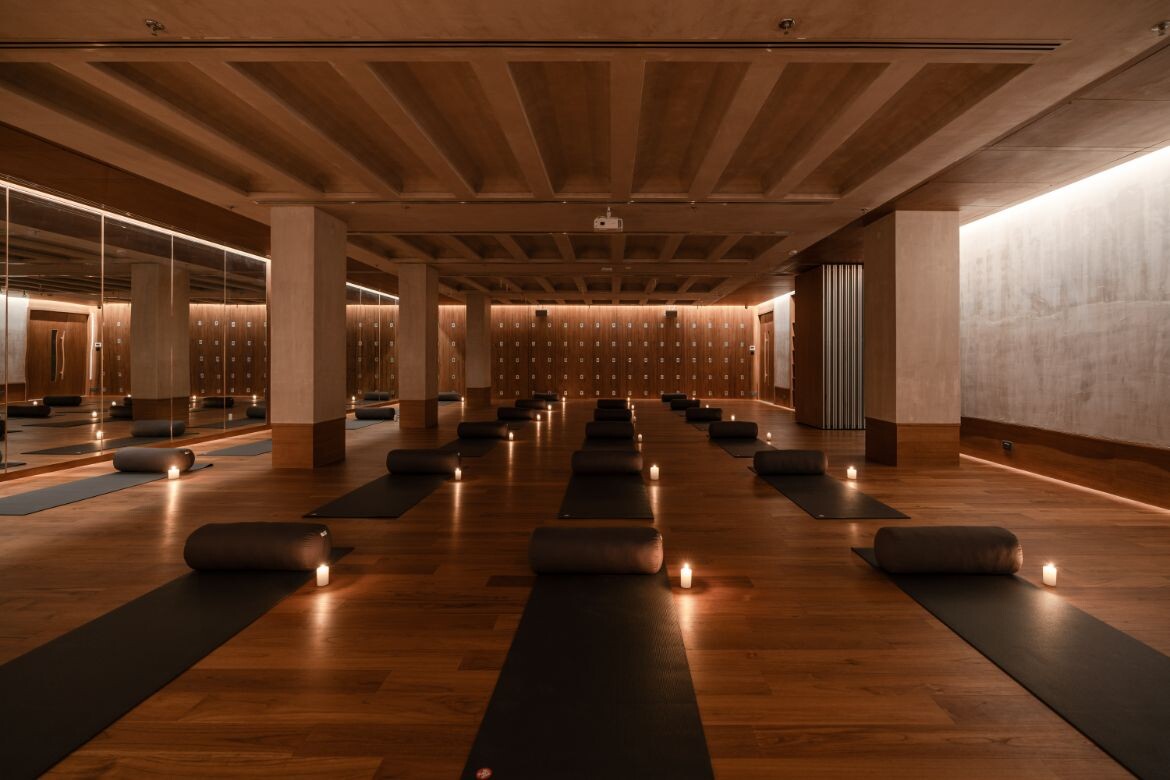Located within New Delhi’s diplomatic enclave of Chanakyapuri, Studio Lotus has delivered an experiential realm that nurtures both the calming and uplifting elements of yoga. Catering to the modern needs of locals as well as visiting practitioners, the studio offers more than 12 diverse yoga styles and disciplines.
As such, the centre is equipped with built-in props ranging from hooks for aerial yoga to wall brackets for Iyengar yoga. Moreover, the studios have adaptable partitions to vary in scale, from those suited to small groups of five to six, to mid-sized groups of about 25, or can be merged to accommodate groups up to 50.
Hot yoga and high-intensity training are likewise facilitated in the large main yoga studio, located on the upper floor. Conceptualised as a conservatory, the white heat panels used in the ceiling for hot yoga, become light baffles for the high intensity sessions.
Briefed by their clients, lifelong practitioners and teachers of yoga, to create an urban sanctuary rooted in ancient wisdom yet responsive to contemporary needs, the design is based on the understanding that yoga now belongs to the world, while its roots lie firmly in the Patanjali Sutra.
Key to Studio Lotus’ design approach is a succession of spaces that progressively moves inwards, allowing practitioners to shed the chaos of outside, and ready the body and spirit for a fully immersive experience.
Spanning three levels each characterised by a unique play of scale, volume, and light, the levels correspond to the diverse programmatic requirements, while the connection between each is free-flowing. “Light is physiologically linked to one’s internal state of mind, and the energy state of the body –elements intrinsic to yogic practice. There are a few interventions we made to ensure that this aspect is addressed by design, and not by default. To begin with, since several yoga postures involve one lying-down-face-up, care has been taken to have no direct sources of light on the ceiling. Care has also been taken to independently light vertical surfaces,” says Ambrish Arora, founding principal of Studio Lotus.
At ground level, the reception extends into a retail zone, and a restaurant, ‘Eleved’, serving Ayurveda-inspired food. A low-height mezzanine with inbuilt ledges and floor furniture is used for consultation areas and meditation rooms.
The low light levels of the basement facilitate the slower, deeper, more meditative practices of yoga with all light sources being modulated to create ambient moods. “The more meditative, introspective routines or asanas like Shavasana require more subdued lighting. Programmed light controls have been built into the space that allows yoga teachers to transition between various moods within the same class, if so required,” explains Arora.
The austere materiality is intentionally tactile with indigenously-sourced materials including kikar (acacia) and Mandana red sandstone expressed throughout as Arora shares: “The building is a part of a larger community centre and the white façade of the yoga centre seeks to blend into its broader vocabulary. Inside, the all-natural colour palette of the spaces is derived from the materials themselves, and given a patina that highlights their tactility – bringing warmth and character to an otherwise spartan space.”
The wax-finished ivory walls have been plastered using a mix of Plaster of Paris and cow dung that imparts microbicidal properties, to create a tactile interplay of regular inconsistency. “Our use of traditional materials is linked more to the idea of regionalism – the attempt, always, is to localise our sourcing to keep embodied carbon levels down. However, in this particular instance, there is a natural kind of synergy with the manner of teaching at Lifeyoga – several schools or methods of yogic practice coexisting under the same roof. Some are deeply traditional, such as Hatha or Vinyasa yoga, some radically contemporary, such as sculpt yoga, which has been created to suit contemporary lifestyle needs, and others that lie somewhere in between. The character of the space, hence, expressed in large part through the materiality, subtends this spectrum,” says Arora.
The furniture, panelling, and flooring all use local kikar (acacia) wood to further infuse warmth and a sense of regional character. The custom designed furniture from Studio Lotus (crafted by Lap & Dado) is beautifully detailed as are the lockers with interlocking form with inbuilt charging points. Hand carved doors and storage racks in the same timber are beautifully simple with the timber celebrated as a hero without embellishment. Translucent muslin and handmade paper are used as dividers and screens to impart varying degrees of porosity. In the restaurant, these screens are three-quarter height to cocoon guests while guiding sightlines to the foliage beyond.
With the most discreet of evenly distributed air-conditioning, low velocity single-slot ducts, guarantee there are no drafts on the practitioners. Additionally, the built-in air purification system ensures that air quality index levels are monitored and controlled to optimal levels at all times. Lighting is similarly well considered with daylight controlled for optimal effect, both high and low as needs dictate.
As an expression of warm neutrals and earthy tones surrounded by foliage, the volume is impressive, but it is the attention to the centre’s role in preparing both the physical and psychological needs of the clients that sets the project apart.
Project details
Client – Lifeyoga
Location – New Delhi
Architecture and interiors – Studio Lotus
Photography – Kartikeya Manan















